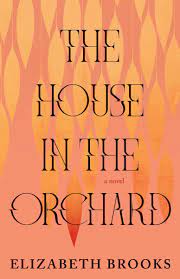Reading The House in the Orchard by Elizabeth Brooks took me back to two of my favorite classics. Maude, a character you will both love and hate, is a flawed heroine reminiscent of both Estella Havisham from Dickens’ Great Expectations and Bronte’s Jane Eyre. This Gothic tale of tragedy and transformation has intense emotion, terror, pleasure, death, romance, and eerie ghostly visions during the night.
The novel starts with Maude’s Will. She is leaving Orchard House to her nephew, and knows that her brother will not be pleased. The nephew never receives his inheritance, but it benefits his wife, Peggy and young son, Laurie. They pay a visit to the house and decide to stay the night. It is in this one night that Peggy finds a diary, started in 1876, and the reader finds out about Maude’s life and the tragedy that separated her from her brother.

The product of a cold, cruel, mother, Maude is haughty and vain, never allowed to show emotion. When she does not behave, the punishments are excessive. When she is orphaned at the age of thirteen her relatives refuse to take her in. She is sent to Orchard House to live with Kitty, a woman scorned for her adulterous behavior and her intelligence, which is viewed as unfeminine. Oddly enough, it is here that Maude finds generosity, true acceptance, and love.
The novel raises some questions and leaves the reader to make interpretations. You may even want to read it twice. Recommended for fans of Jane Eyre or Rebecca.
Categories: Books and More

